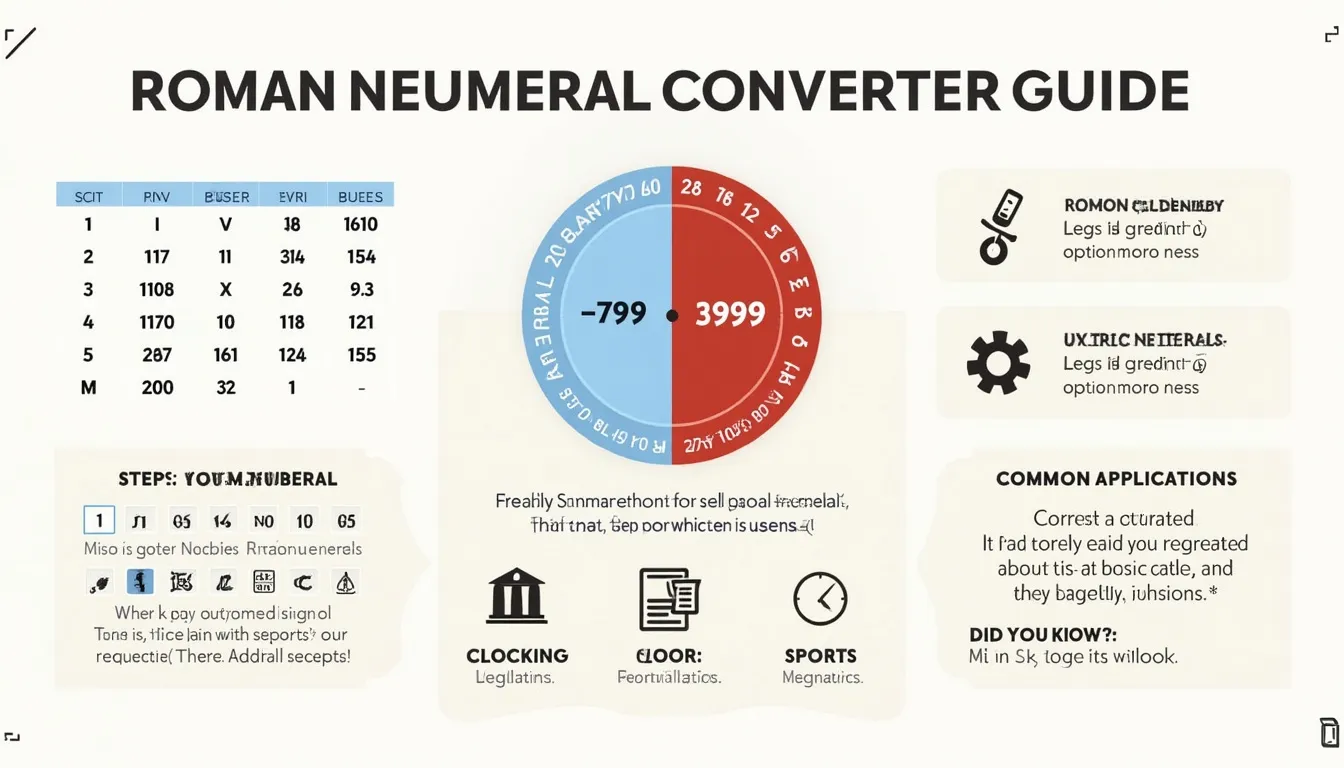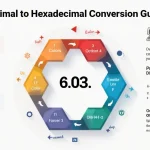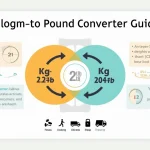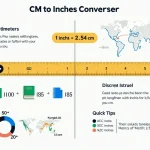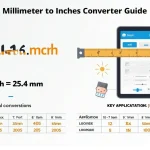Roman Numeral Converter
Is this tool helpful?
How to Use the Roman Numeral Converter Effectively
Our Roman Numeral Converter is a user-friendly tool designed to seamlessly convert between Roman numerals and Arabic numerals (integers). Follow these simple steps to make the most of this powerful converter:
- Select Conversion Type: Choose between “Integer to Roman Numeral” or “Roman Numeral to Integer” from the dropdown menu.
- Enter Your Input:
- For Integer to Roman Numeral: Enter a whole number between 1 and 3999 in the input field. For example, enter “1987”.
- For Roman Numeral to Integer: Type a valid Roman numeral using uppercase letters. For instance, enter “MCMLXXXVII”.
- Click Convert: Press the “Convert” button to see your result.
- View Result: The converted value will appear in the “Result” section below the form.
Remember, if you enter an invalid input, such as a number outside the accepted range or an incorrect Roman numeral, an error message will guide you to make the necessary corrections.
Unlocking the Power of Roman Numerals: Your Gateway to Ancient Number Systems
Welcome to our Roman Numeral Converter, a sophisticated yet easy-to-use tool that bridges the gap between ancient Roman numerals and modern Arabic numerals. This converter serves as your personal time machine, allowing you to effortlessly translate between two significant numbering systems that have shaped human history.
What Are Roman Numerals?
Roman numerals are a number system that originated in ancient Rome and remained the primary way of writing numbers throughout Europe well into the Late Middle Ages. Unlike our current decimal system, Roman numerals are based on seven symbols:
- I = 1
- V = 5
- X = 10
- L = 50
- C = 100
- D = 500
- M = 1000
These symbols are combined according to specific rules to represent numbers. For instance, “XIV” represents 14 (10 + 4), while “XCIX” represents 99 (100 – 10 – 1).
The Purpose of Our Roman Numeral Converter
Our Roman Numeral Converter serves multiple purposes:
- Educational Tool: It helps students and enthusiasts learn and practice Roman numeral conversions.
- Historical Research Aid: Historians and archaeologists can quickly decipher dates and numbers in ancient texts and inscriptions.
- Modern Applications: It assists in converting Roman numerals found in various contexts, such as book chapters, clock faces, and formal documents.
- Time-Saving Device: It eliminates the need for manual calculations, reducing errors and saving valuable time.
Benefits of Using Our Roman Numeral Converter
Employing our Roman Numeral Converter offers numerous advantages:
- Accuracy: Our converter eliminates human error, ensuring precise conversions every time.
- Speed: Convert numbers instantly, saving time on manual calculations.
- Educational Value: Learn the rules of Roman numerals through repeated use and observation.
- Versatility: Convert in both directions – from Arabic to Roman and vice versa.
- User-Friendly Interface: Simple design makes it accessible for users of all ages and technical backgrounds.
- No Installation Required: Access the tool directly from your web browser, no downloads necessary.
Addressing User Needs: How Our Converter Solves Specific Problems
Our Roman Numeral Converter is designed to address a variety of user needs and solve specific problems related to number system conversions. Let’s explore some common scenarios and how our tool provides solutions:
1. Deciphering Historical Dates
Historians often encounter dates written in Roman numerals in ancient texts or inscriptions. Our converter simplifies the process of understanding these dates.
Example: A historian finds an inscription dated “MDCCLXXVI”. Using our converter, they quickly determine that this represents the year 1776, a significant date in American history.
2. Assisting Students with Homework
Students learning about Roman numerals can use our tool to check their work and reinforce their understanding of the number system.
Example: A student is asked to convert the number 2023 to Roman numerals. They can use our converter to verify their answer of “MMXXIII”.
3. Aiding in Publication Formatting
Authors and editors often need to convert between Arabic and Roman numerals for chapter numbers or section headings.
Example: An editor needs to change all chapter numbers in a book from Arabic to Roman numerals. For Chapter 47, they can quickly find that it should be represented as “XLVII”.
4. Enhancing Clock and Watch Design
Watchmakers and designers creating timepieces with Roman numeral dials can use our tool to ensure accuracy in their designs.
Example: A watch designer wants to create a unique timepiece using Roman numerals. They can use our converter to confirm that 4 o’clock should be represented as “IV” on the watch face.
5. Assisting in Genealogical Research
Family historians often encounter Roman numerals in old documents and gravestones. Our converter helps them accurately interpret dates and other numerical information.
Example: A genealogist finds a gravestone with the date of death listed as “MCMXLV”. Using our converter, they can quickly determine this represents 1945.
The Mathematics Behind Roman Numeral Conversion
Understanding the mathematical principles behind Roman numeral conversion can deepen your appreciation for this ancient number system. Let’s explore the algorithms used in our converter:
Converting Integer to Roman Numeral
The process of converting an integer to a Roman numeral involves repeatedly subtracting the largest possible Roman numeral symbol value from the integer until it reaches zero. This process can be represented mathematically as follows:
$$ R = \sum_{i=1}^{n} s_i \cdot v_i $$Where:
- R is the resulting Roman numeral
- n is the number of unique Roman numeral symbols
- s_i is the i-th symbol in the Roman numeral system
- v_i is the value of the i-th symbol
Converting Roman Numeral to Integer
The conversion from Roman numeral to integer involves iterating through the Roman numeral string, comparing adjacent symbol values, and either adding or subtracting based on their relative magnitudes. This process can be represented mathematically as:
$$ I = \sum_{i=1}^{n} (-1)^{[v_i < v_{i+1}]} \cdot v_i $$Where:
- I is the resulting integer
- n is the number of symbols in the Roman numeral
- v_i is the value of the i-th symbol
- [v_i < v_{i+1}] is 1 if true and 0 if false (Iverson bracket notation)
Practical Applications: Real-World Uses of Roman Numerals
While Arabic numerals dominate modern numerical representations, Roman numerals continue to play a significant role in various aspects of our lives. Let’s explore some practical applications where our Roman Numeral Converter proves invaluable:
1. Legal Documents and Contracts
Many legal documents, particularly in Civil Law countries, use Roman numerals to enumerate sections, clauses, or amendments. Our converter helps legal professionals and individuals accurately interpret and create these documents.
Example: A lawyer drafting a contract needs to add a new clause between existing sections IV and V. Using our converter, they can easily determine that the new section should be labeled “IVa” or “IV bis”.
2. Film and Television Production
The entertainment industry often uses Roman numerals in copyright dates and sequel titles. Our tool assists producers, marketers, and fans in correctly interpreting and creating these numbers.
Example: A film studio is releasing the 23rd movie in a popular franchise. Using our converter, they can quickly determine that the Roman numeral representation for the title would be “XXIII”.
3. Sports Events and Competitions
Major sporting events, particularly those with long histories, often use Roman numerals in their titles. Our converter helps organizers and fans correctly identify and reference these events.
Example: An sports journalist writing about the upcoming 58th Super Bowl can use our converter to confirm that it should be referred to as “Super Bowl LVIII”.
4. Academic Publications
Many academic journals and books use Roman numerals for preface pages, appendices, and chapter numbers. Our tool assists authors, editors, and students in navigating these publications.
Example: A researcher looking for information in the 19th appendix of a scientific paper can use our converter to confirm they should be searching for “Appendix XIX”.
5. Genealogy and Family History
Family historians often encounter Roman numerals in old documents, gravestones, and family trees, particularly when dealing with monarchs or nobles with the same name. Our converter aids in accurately interpreting this information.
Example: A genealogist researching King Louis XIV of France can use our converter to confirm that “XIV” indeed represents 14, helping them distinguish between different King Louis in French history.
6. Architecture and Monument Inscriptions
Many historical buildings and monuments feature dates or other numerical information in Roman numerals. Our tool helps architects, historians, and tourists interpret these inscriptions accurately.
Example: A tourist visiting a cathedral sees the date “MDCXXII” carved above the entrance. Using our converter, they can quickly determine that the cathedral was built in 1622.
Frequently Asked Questions (FAQ)
Q1: What is the largest number I can convert using this tool?
A1: Our Roman Numeral Converter can handle numbers up to 3999, which is represented as “MMMCMXCIX” in Roman numerals. This range covers most practical uses of Roman numerals.
Q2: Can I convert negative numbers or fractions to Roman numerals?
A2: Roman numerals traditionally do not represent negative numbers or fractions. Our converter is designed for positive whole numbers from 1 to 3999.
Q3: Why does the number 4 appear as “IV” instead of “IIII”?
A3: While “IIII” is occasionally used (e.g., on some clock faces), the subtractive notation “IV” is more common and considered standard. Our converter uses this standard notation.
Q4: Are there any numbers that can’t be represented in Roman numerals?
A4: In theory, any positive whole number can be represented in Roman numerals. However, for very large numbers, the representations become impractically long. Our converter handles numbers up to 3999.
Q5: How do I represent zero in Roman numerals?
A5: The ancient Romans did not have a symbol for zero. The concept of zero as a number came later. Therefore, our converter doesn’t handle the number zero.
Q6: Can Roman numerals represent decimal numbers?
A6: Traditional Roman numerals do not represent decimal fractions. However, some modern adaptations use a vinculum (overline) to represent fractions, but this is not universally accepted or implemented in our converter.
Q7: Why are some numbers written differently in different contexts?
A7: While there are standard rules for writing Roman numerals, some variations exist, particularly for numbers like 4 (IV or IIII) and 9 (IX or VIIII). Our converter uses the most commonly accepted standard forms.
Q8: Can I use lowercase letters for Roman numerals?
A8: While lowercase Roman numerals are sometimes used, uppercase letters are more common and standard. Our converter accepts and outputs uppercase Roman numerals for clarity and consistency.
Q9: How do I read large Roman numerals?
A9: Read Roman numerals from left to right, adding or subtracting values based on the symbols’ positions. Our converter can help you practice by allowing you to convert between formats.
Q10: Are there any tricks to quickly convert small numbers in my head?
A10: For small numbers, memorizing common patterns can help. For example, years: MCM = 1900, MM = 2000. Practice with our converter to become more familiar with these patterns.
By addressing these common questions, we hope to enhance your understanding and use of our Roman Numeral Converter. Remember, practice makes perfect, and our tool is always here to assist you in your Roman numeral adventures!
Important Disclaimer
The calculations, results, and content provided by our tools are not guaranteed to be accurate, complete, or reliable. Users are responsible for verifying and interpreting the results. Our content and tools may contain errors, biases, or inconsistencies. We reserve the right to save inputs and outputs from our tools for the purposes of error debugging, bias identification, and performance improvement. External companies providing AI models used in our tools may also save and process data in accordance with their own policies. By using our tools, you consent to this data collection and processing. We reserve the right to limit the usage of our tools based on current usability factors. By using our tools, you acknowledge that you have read, understood, and agreed to this disclaimer. You accept the inherent risks and limitations associated with the use of our tools and services.
